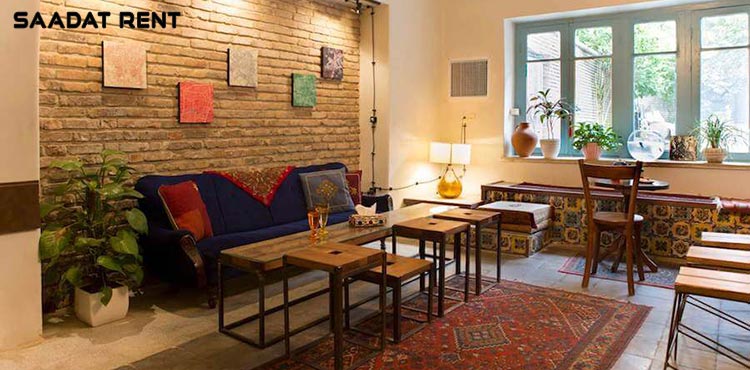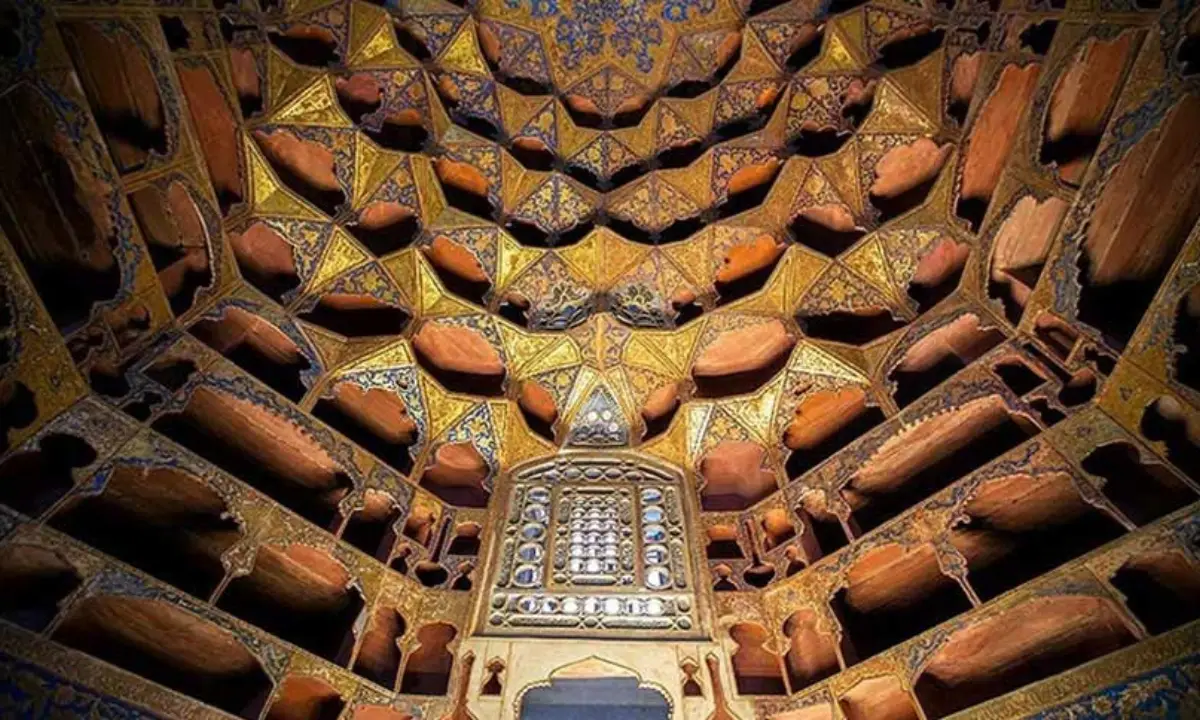Persian Cuisine | Top Iranian Foods That Tourists Love
![]() Author : Alirezaa | Date : Saturday 26 July 2025 13:16
Author : Alirezaa | Date : Saturday 26 July 2025 13:16
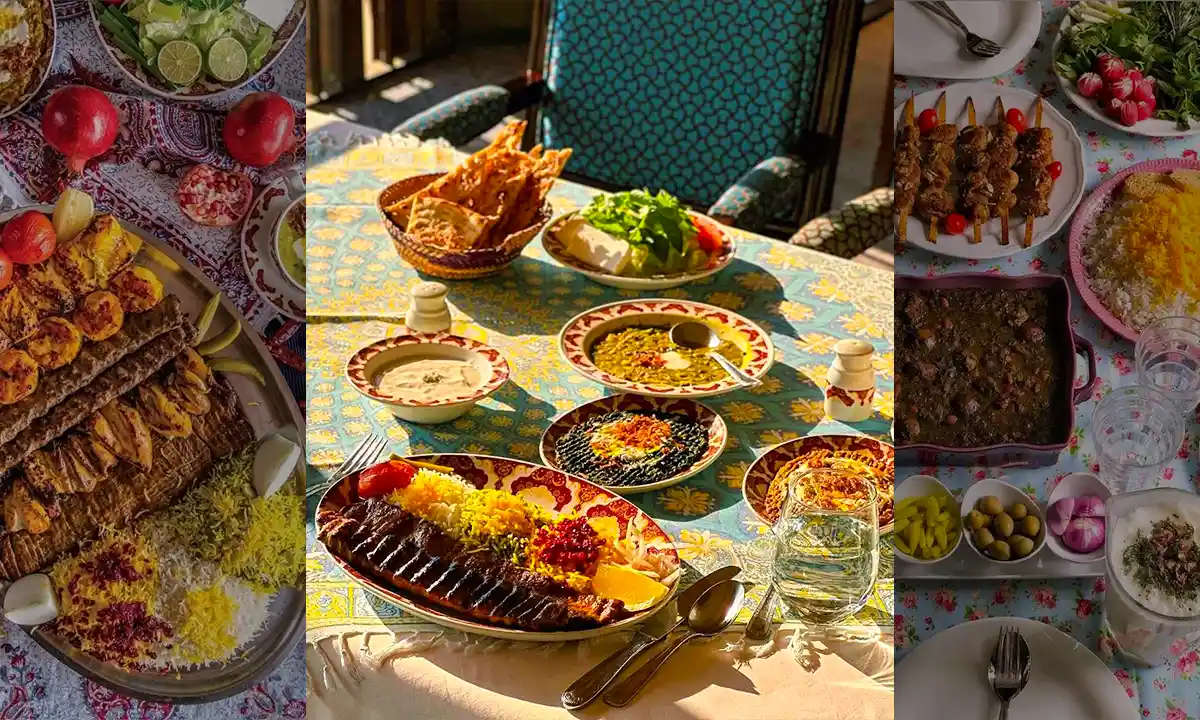
Persian cuisine, known for its rich flavors and aromatic spices, is an integral part of Iranian culture. Food holds a significant place in Persian traditions, bringing families and friends together. This article will explore some of the most beloved Iranian dishes that captivate tourists, including various types of kebab, Ghormeh Sabzi, Kashk-e Bademjan, Tahchin, Kookoo Sabzi, Ash, Sabzi Polo ba Mahi, Zereshk Polo ba Morgh, Dizi, and Baghali Polo ba Goosht. Discover why these dishes are must-tries for anyone visiting Iran.
Kebabs
Persian kebabs are a staple of Iranian cuisine, offering a variety of flavors and textures that captivate tourists. Key types include Koobideh (ground meat seasoned with onions and spices), Joojeh (marinated chicken), Barg (thinly sliced marinated lamb or beef), and Shishlik (lamb chops marinated in a blend of yogurt and spices). These kebabs are typically grilled over an open flame, giving them a smoky, charred flavor. Tourists love Persian kebabs for their succulent taste, the use of fresh ingredients, and the traditional preparation methods that highlight the rich culinary heritage of Iran.
- The ingredients: Meat, onions, garlic, saffron, lemon juice, yogurt, salt, and pepper.
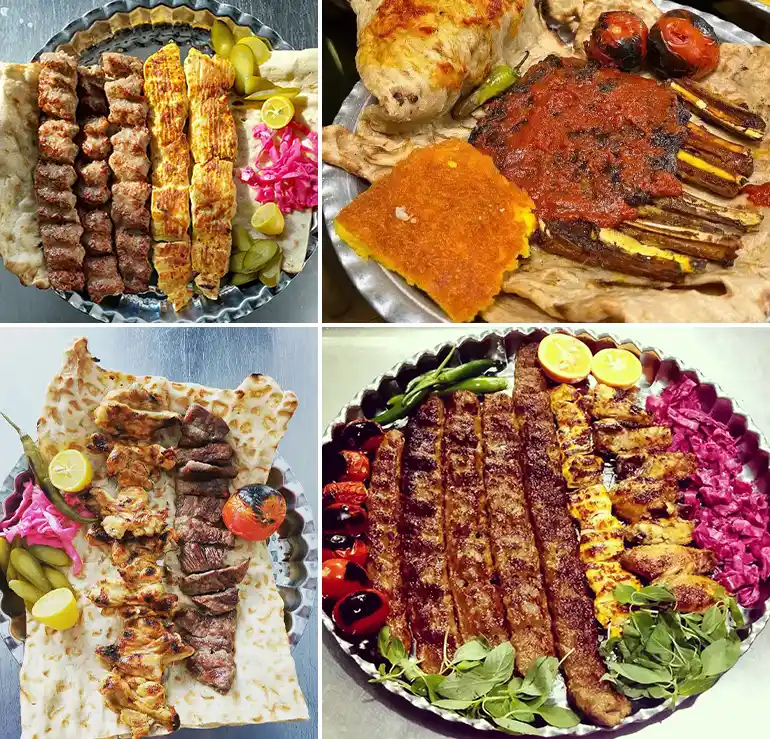
Ghormeh Sabzi
Ghormeh Sabzi is an iconic Persian herb stew that has become a favorite among tourists for its unique and rich flavor profile. The dish features a blend of fresh herbs (parsley, cilantro, and fenugreek), kidney beans, tender chunks of meat (usually lamb or beef), and dried limes, which impart a tangy and slightly citrusy taste. The stew is slow-cooked to perfection, allowing the flavors to meld beautifully. It is typically served with steamed basmati rice, creating a hearty and satisfying meal. Tourists often rave about Ghormeh Sabzi, praising its complex flavors and the comforting experience it provides, making it a must-try dish when visiting Iran.
- The ingredients: Lamb/beef, kidney beans, onions, dried limes, fenugreek leaves, parsley, coriander, turmeric, pepper.
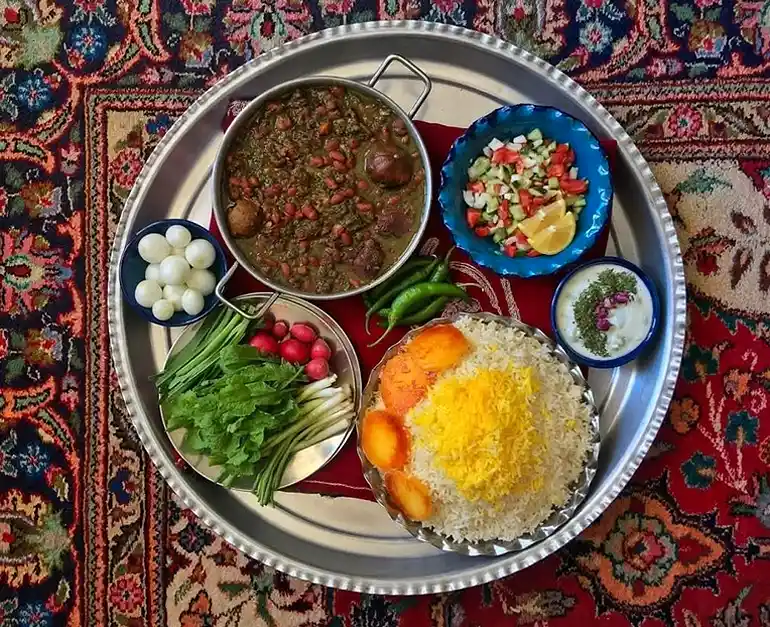
Kashk-e Bademjan
Kashk-e Bademjan is a popular Persian eggplant dip that delights tourists with its rich and savory flavors. The dish is made from roasted or fried eggplants, garlic, onions, walnuts, and kashk (a type of fermented whey). Traditionally, the eggplants are mashed and mixed with sautéed onions and garlic, then topped with kashk and a garnish of fried mint and walnuts. This dip is typically served warm, accompanied by fresh Persian bread or flatbread. Tourists are drawn to Kashk-e Bademjan for its unique combination of creamy, tangy, and earthy flavors, making it a memorable and enjoyable appetizer in Persian cuisine.
- The ingredients: Eggplants, kashk (A persian traditional dairy), onions, garlic, mint, turmeric, oil, and optional walnuts.
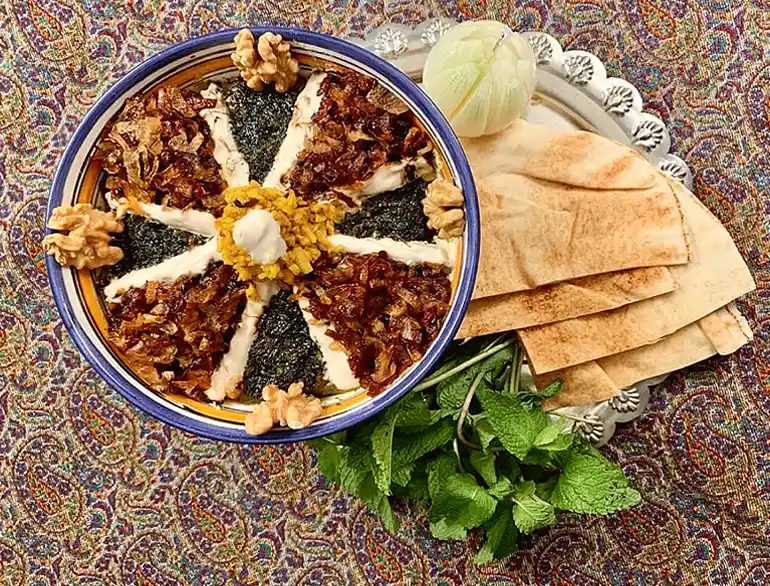
✔️Read More : THE 7 BEST RESTAURANTS IN TEHRAN 2024
Tahchin
Tahchin is a unique Persian saffron rice cake that captivates tourists with its striking appearance and delightful taste. This dish consists of a delicious blend of saffron-infused rice, yogurt, eggs, and a variety of fillings such as chicken, lamb, or vegetables. The ingredients are carefully layered in a baking dish, creating a golden, crispy crust on the outside while the inside remains moist and flavorful. Variations include Tahchin Morgh (with chicken), Tahchin Gosht (with lamb), and vegetarian versions featuring eggplant or other vegetables. Tourists find Tahchin fascinating not only for its delectable flavors but also for its visually appealing presentation, making it a highlight of Persian cuisine.
- The ingredients: Rice, yogurt, eggs, saffron, chicken/lamb, onions, butter, salt, pepper.
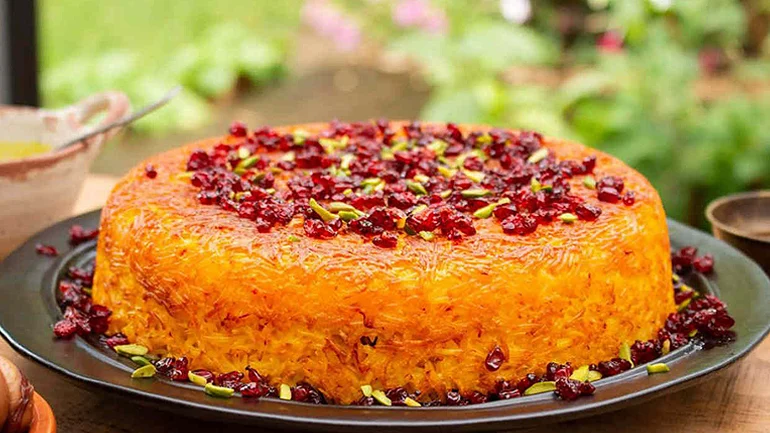
Kookoo Sabzi
Kookoo Sabzi is a Persian herb frittata that is both nutritious and flavorful, making it a favorite among tourists. This dish is made with a variety of fresh herbs such as parsley, cilantro, dill, and chives, combined with eggs, walnuts, and barberries for added texture and taste. The mixture is seasoned with turmeric, salt, and pepper, then fried or baked until golden and set. Kookoo Sabzi is typically served as an appetizer or side dish, often accompanied by yogurt and bread. Tourists are attracted to its vibrant green color and the fresh, aromatic flavors that provide a delightful introduction to Persian cuisine.
- Ingredients: Herbs (parsley, coriander, dill, chives), eggs, flour, turmeric, baking powder, optional walnuts, optional barberries, salt, and pepper.
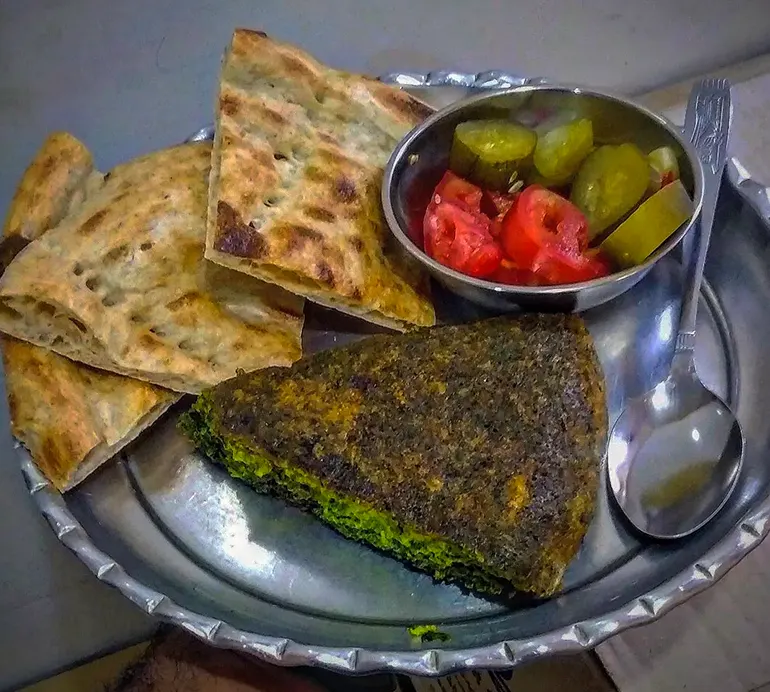
Read More:✔️Top 10 Iranian desserts that you should try them
Ash
Ash, a category of hearty Persian soups, holds a special place in Iranian cuisine, with Ash Reshteh being the most beloved variety. Ash Reshteh is made with a rich blend of ingredients including herbs (parsley, cilantro, spinach), legumes (chickpeas, lentils, beans), and reshteh (Persian noodles). The soup is slow-cooked to develop deep flavors and is often garnished with fried onions, garlic, mint, and a dollop of kashk (fermented whey). Ash Reshteh is traditionally served during Persian New Year (Nowruz) and other festive occasions, symbolizing prosperity and health. Tourists frequently praise Persian soups for their comforting, nourishing qualities and the complex, aromatic flavors that provide an authentic taste of Iranian culture.
- The ingredients: Herbs (parsley, spinach, dill), legumes (lentils, chickpeas), noodles, onions, garlic, turmeric, mint, yogurt/kashk, water/stock.

Sabzi Polo ba Mahi
Sabzi Polo ba Mahi is a traditional Persian dish that pairs fragrant herb rice with perfectly cooked fish, creating a delightful and aromatic meal. The key ingredients include basmati rice mixed with a blend of fresh herbs such as parsley, cilantro, dill, and fenugreek. The rice is typically steamed with these herbs to infuse it with their flavors. The dish is usually accompanied by fried or baked fish, often marinated in saffron, lemon juice, and garlic. Sabzi Polo ba Mahi is traditionally served during Nowruz, the Persian New Year, symbolizing prosperity and renewal. Tourists love this dish for its vibrant flavors and the cultural significance it represents, often highlighting it as a memorable and authentic Iranian culinary experience.
- Ingredients: Rice, herbs (parsley, coriander, dill, scallions), fish, garlic, lemon, saffron, oil, salt, pepper.
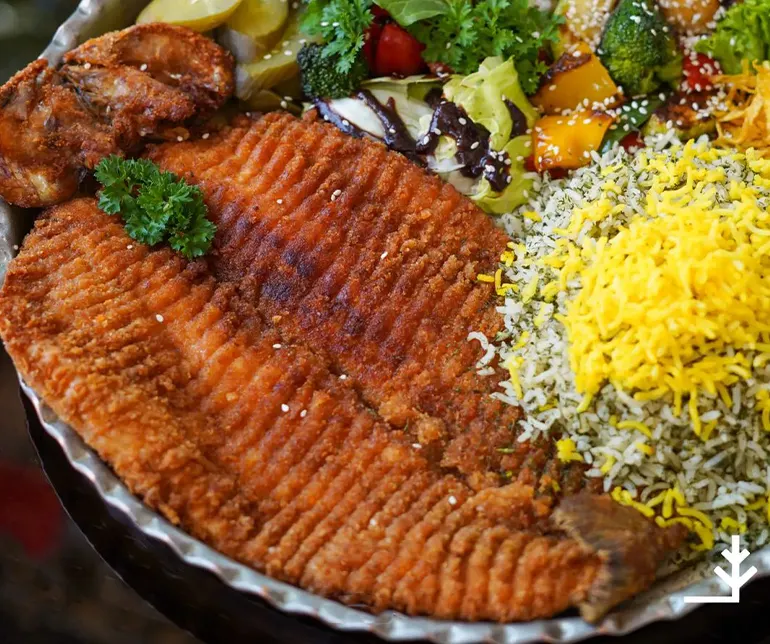
Zereshk Polo ba Morgh
Zereshk Polo ba Morgh is a classic Persian dish that combines aromatic barberry rice with succulent chicken, creating a meal that is both visually stunning and delicious. The dish features basmati rice cooked with zereshk (barberries), which provide a tart and slightly sweet flavor, and saffron for its distinct aroma and color. The chicken is typically braised with onions, tomato paste, and spices, resulting in tender, flavorful meat. The combination of the tangy barberries, fragrant saffron rice, and savory chicken creates a unique flavor profile that is both rich and balanced. This dish is immensely popular among tourists who appreciate its vibrant taste and the cultural experience it offers, often describing it as a highlight of their culinary journey in Iran.
- Ingredients: Rice, barberries, chicken, onions, saffron, sugar, butter, salt, pepper.
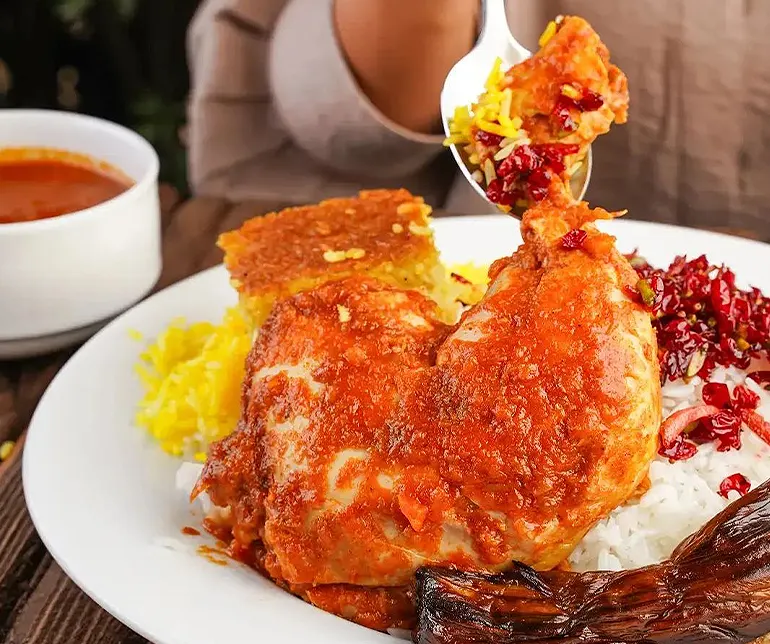
Read More:✔️Vegetarian Persian food; Where can we eat vegetarian food in Iran
Dizi
Dizi, also known as Abgoosht, is a traditional Persian lamb and chickpea stew that offers a hearty and authentic taste of Iranian cuisine. This dish is traditionally prepared in clay pots, which enhance the flavors through slow cooking. The main ingredients include lamb, chickpeas, white beans, potatoes, tomatoes, and dried limes, all seasoned with turmeric and other spices. The stew is cooked until the meat is tender and the flavors are well-blended. Dizi is served in two parts: the broth is poured out and enjoyed as a soup, while the solid ingredients are mashed together and eaten with flatbread. Tourists are particularly drawn to Dizi for its rustic preparation method and rich, comforting flavors, making it a sought-after experience for those looking to immerse themselves in Persian culinary traditions.
- The ingredients: Lamb/beef, chickpeas, potatoes, tomatoes, onions, dried limes, turmeric, pepper, water.

Baghali Polo ba Goosht
Baghali Polo ba Goosht is a beloved Persian dish featuring fragrant rice mixed with fava beans and dill, served alongside tender meat, typically lamb or beef. The ingredients include basmati rice, fresh or dried dill, and fava beans, which are layered and cooked together to create a flavorful and aromatic pilaf. The meat is often braised with onions and saffron, enhancing its richness and tenderness. Variations of this dish may include different herbs or the use of chicken instead of lamb. Baghali Polo ba Goosht is commonly served at special occasions and celebrations, such as weddings and Nowruz (Persian New Year). Tourists love this dish for its unique combination of fresh herbs, savory meat, and the delicate balance of flavors, offering a delightful and memorable taste of Persian cuisine.
- The ingredients: Rice, lamb shank/chicken, fava beans, dill, garlic, saffron, butter, salt, pepper.
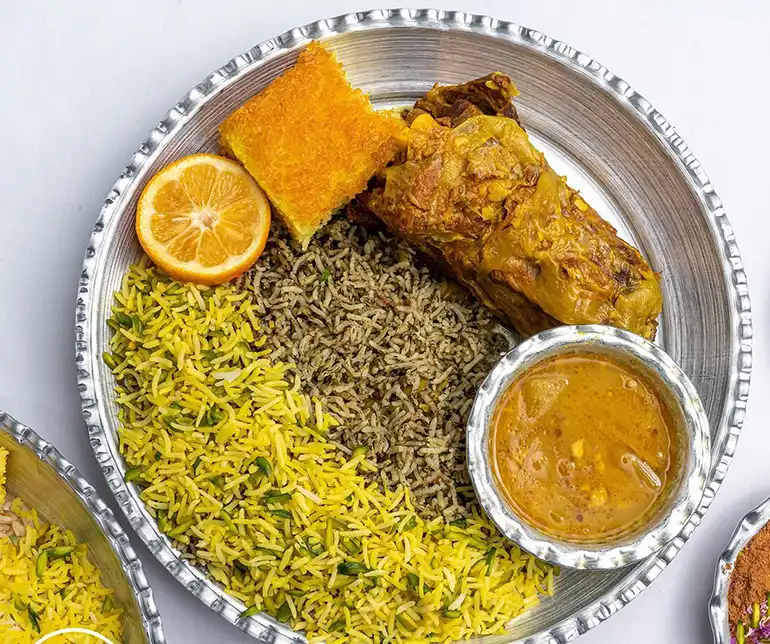
Thirsty After Your Meal? Try These Traditional Persian Beverages
After indulging in the rich flavors of Persian cuisine, complement your meal with a traditional Persian beverage. Here are some favorites:
- Doogh: A savory yogurt-based drink seasoned with mint and salt, often served cold. It's particularly refreshing and pairs well with kebabs.
- Sharbat-e Sekanjebin: A sweet mint syrup mixed with vinegar, served with ice and fresh mint. It's a rejuvenating drink, perfect for cooling down on warm days.
- Chai (Tea): No meal is complete without a hot cup of Persian tea, typically black and often brewed with aromatic cardamom or rose petals. Enjoy it with a lump of sugar or nabat (saffron sugar sticks).
- Khakshir: A soothing beverage made with khakshir seeds (similar to basil seeds), water, and rosewater, known for its cooling properties.
These beverages not only quench your thirst but also offer a glimpse into the rich culinary culture of Persia.
Last Word
Persian cuisine offers a diverse and rich tapestry of flavors, from the savory kebabs to the aromatic herb-infused rice dishes. Tourists are encouraged to explore Iranian food to experience the unique and authentic tastes that define this culinary tradition. Dining in Iran is more than just a meal; it's a cultural experience that reflects the country's history, hospitality, and vibrant culinary heritage. Don't miss the chance to savor these delightful dishes on your next visit.
Frequently Asked Questions About Iranian Tourist Cities
In the following section, we answer some frequently asked questions about traveling to the top tourist cities in Iran:
What are the must-visit tourist cities in Iran?
Iran is home to many historic and beautiful cities. The top must-visit tourist cities include Isfahan, Shiraz, Tehran, Yazd, and Mashhad — each offering unique cultural landmarks, ancient architecture, and unforgettable experiences.
Is it safe for tourists to travel to Iranian cities in 2024?
Yes, Iran is generally considered safe for international travelers. Most tourist cities have strong hospitality cultures and are welcoming to visitors. It's recommended to follow local guidelines and travel with a registered guide if possible.
Which Iranian city is best for historical sightseeing?
Isfahan is often regarded as the best city for historical sightseeing in Iran. With iconic landmarks like Naqsh-e Jahan Square, Si-o-se-pol Bridge, and stunning Safavid-era architecture, it’s a favorite among culture lovers.
What is the most religious city to visit in Iran?
Mashhad is the holiest city in Iran, home to the Imam Reza Shrine, which attracts millions of pilgrims every year. It’s a spiritual hub and an important destination for those interested in religious tourism.
Can tourists find modern attractions alongside traditional sites in Iranian cities?
Absolutely. Cities like Tehran offer a blend of modern and traditional experiences — from contemporary art museums and cafés to ancient bazaars and historical palaces. This contrast makes traveling in Iran uniquely rich.
What’s the best time of year to visit tourist cities in Iran?
The ideal time to visit most Iranian cities is during spring (March to May) and autumn (September to November) when the weather is mild and pleasant, especially in cities like Shiraz, Yazd, and Isfahan.


